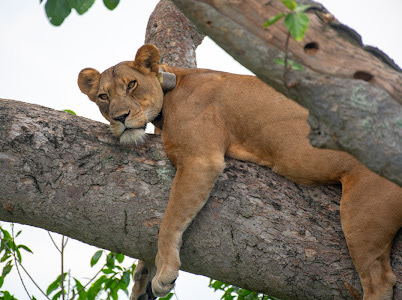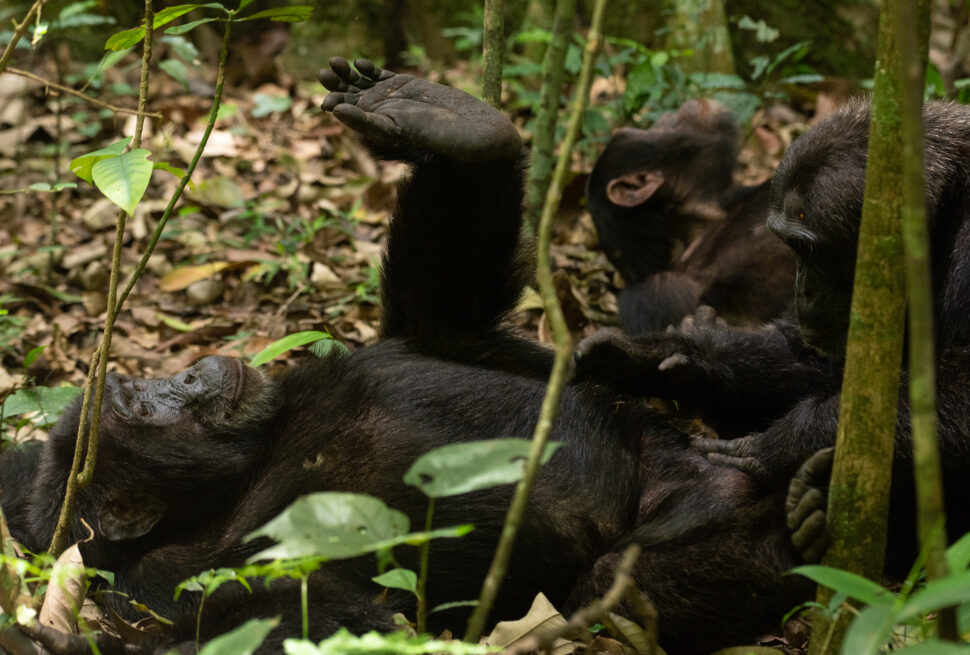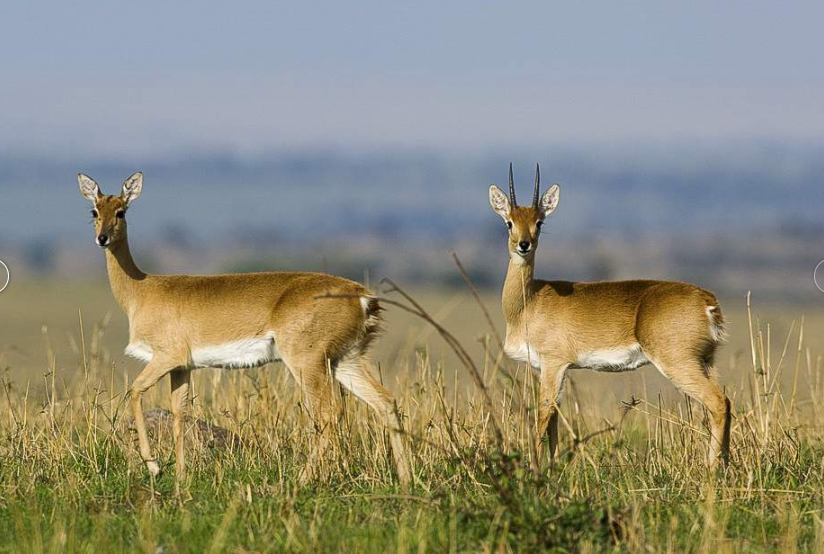Uganda is a land of many wonders, but few are as unique and captivating as the tree-climbing lions of Queen Elizabeth National Park. While lions are generally known for their prowess on the ground, in this part of Africa, these majestic predators have developed an unusual and fascinating behavior – they climb trees.
1. Where to Find Tree-Climbing Lions in Uganda

The tree-climbing lions are primarily found in two locations within Uganda:
Murchison Falls National Park: While less common than in Ishasha, there have been occasional sightings of tree-climbing lions in Murchison Falls National Park. However, Ishasha remains the best and most reliable place to witness this behavior.
Ishasha Sector, Queen Elizabeth National Park: The Ishasha sector, located in the southwestern part of Queen Elizabeth National Park, is the most famous spot for seeing these incredible lions. This area is known for its vast savannahs, scattered fig trees, and, of course, the lions that lounge in their branches.
2. Why Do Lions Climb Trees?
The behavior of tree-climbing among lions is rare and not fully understood, but there are several theories that might explain why these lions in Uganda have taken to the trees:
Learned Behavior: Some experts suggest that this behavior could be a learned one, passed down from generation to generation. It might have started with a few individuals who found climbing trees advantageous, and over time, this behavior became more widespread within the pride.
Escape from Heat: One of the most widely accepted explanations is that lions climb trees to escape the intense heat on the ground. The higher branches offer a cooler and breezier environment, allowing the lions to rest comfortably during the hottest parts of the day.
Avoidance of Insects: The savannahs of Uganda are home to numerous biting insects, particularly during the wet season. By climbing trees, lions may avoid these pesky insects, such as tsetse flies and mosquitoes, which are less prevalent higher up in the trees.
Better Viewpoint: Being in a tree provides lions with a vantage point to survey their territory. From the branches, they can spot potential prey or threats more easily than they could on the ground.
3. What Makes the Ishasha Lions Unique?
The tree-climbing lions of Ishasha are particularly famous because this behavior is so rare among lions globally. While there have been reports of similar behavior in other parts of Africa, such as Tanzania’s Lake Manyara, the lions of Ishasha are among the most consistent and easily observed examples of this phenomenon.
In Ishasha, you can often find entire prides of lions sprawled across the branches of large fig and acacia trees. The sight of a 300-pound lion lounging several meters above the ground is both awe-inspiring and surreal. This unique behavior has made the Ishasha sector a must-visit destination for wildlife enthusiasts and photographers.
4. Best Time to See Tree-Climbing Lions
While the tree-climbing lions can be seen throughout the year, the best time to visit Queen Elizabeth National Park for a sighting is during the dry seasons, from June to September and December to February. During these months, the weather is more predictable, and the chances of spotting lions in the trees are higher.
Early morning and late afternoon game drives offer the best opportunities to see the lions when they are most active. However, even during the heat of the day




